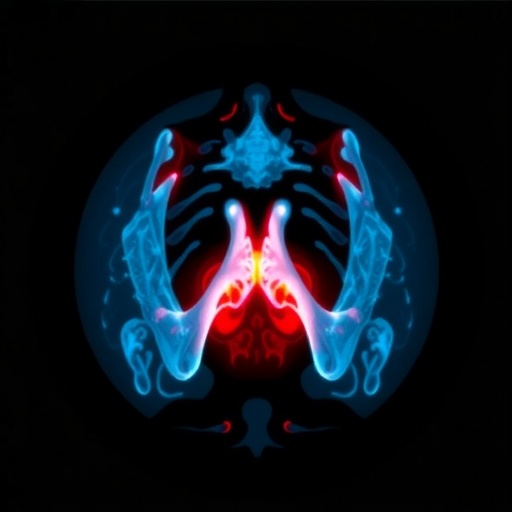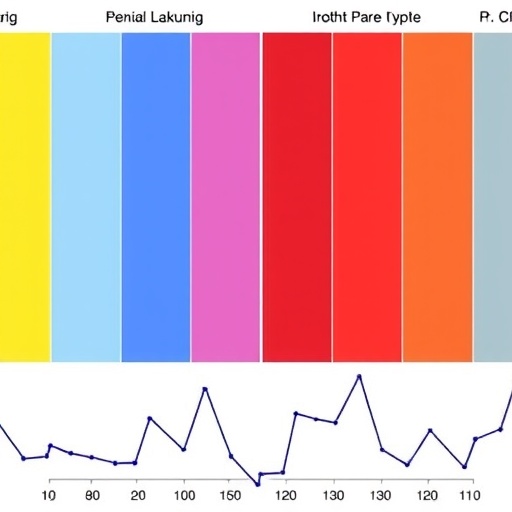In a groundbreaking study recently published in Pediatric Radiology, researchers have unveiled a significant enhancement in the diagnostic capabilities of fetal magnetic resonance imaging (MRI) for esophageal atresia, through the innovative use of super-resolution slice-to-volume reconstruction techniques. This advancement is poised to transform prenatal imaging, offering new hope for early identification and management of this congenital condition. Esophageal atresia, a serious disorder characterized by the improper development of the esophagus, can lead to life-threatening complications if not diagnosed promptly.
The traditional methods of detecting this condition have presented challenges due to the limitations of standard imaging techniques, often resulting in late diagnoses that complicate subsequent medical intervention. With the introduction of super-resolution slice-to-volume reconstruction, the authors of the study argue that the clarity and detail in images are dramatically improved. This innovation could facilitate earlier detection and allow for timely interventions that could significantly improve outcomes for affected infants.
The research team, led by David Loken, alongside co-authors L.F. Goncalves and M. Patel, conducted a series of comparative studies to evaluate the effectiveness of the newly developed imaging technique against conventional fetal MRI procedures. By leveraging advanced algorithms and computational power, their approach allows for the generation of high-resolution, volumetric images from lower-resolution slice data. This method not only conserves data but enhances the diagnostic process by providing more nuanced images that reveal structural anomalies often overlooked in traditional scans.
.adsslot_EmDp7HNXdr{ width:728px !important; height:90px !important; }
@media (max-width:1199px) { .adsslot_EmDp7HNXdr{ width:468px !important; height:60px !important; } }
@media (max-width:767px) { .adsslot_EmDp7HNXdr{ width:320px !important; height:50px !important; } }
ADVERTISEMENT
During the study, the researchers assessed several fetal MRI cases diagnosed with esophageal atresia, utilizing both conventional imaging and the newly developed super-resolution method. The results were promising; the super-resolution technique yielded images with markedly improved clarity, allowing for more accurate evaluations of the developing fetus’s anatomy. Physicians involved reported that the detail provided by this advanced imaging technique made it much easier to identify the presence and severity of esophageal atresia.
One of the critical aspects highlighted in the study is the potential of early diagnosis to trigger essential planning and care strategies prior to birth. The newfound clarity in imaging permits healthcare providers to effectively communicate risks and develop tailored management plans that can be enacted immediately upon delivery. This level of preparedness can lead to better clinical outcomes, reducing the risk of complications associated with this congenital anomaly, which, if left untreated, can lead to severe respiratory problems and feed intolerance.
Moreover, the implications of this research extend beyond just the diagnosis of esophageal atresia. The technological advancements applied in this study could pave the way for improved imaging practices across a spectrum of congenital conditions, allowing for more comprehensive prenatal assessments and interventions. This flexible approach to imaging has the potential to change the landscape of prenatal care, equipping healthcare providers with the tools necessary for early diagnosis and treatment of various developmental disorders.
Despite the promising results, the authors emphasize the need for larger studies to validate the findings and ascertain the generalizability of super-resolution slice-to-volume reconstruction techniques. As medicine increasingly integrates advanced technology, it remains vital to ensure that such innovations are rigorously tested and proven effective in diverse clinical settings.
The study’s findings are expected to resonate within the wider scientific community and could influence future research directions in maternal-fetal medicine. As researchers strive to refine imaging techniques and diagnostic capabilities, they aim to bridge the gap between fetal health and maternal wellbeing. Enhanced imaging technology represents a crucial step towards achieving the goal of comprehensive prenatal care, ensuring that risk factors are identified early and managed appropriately.
As the healthcare industry evolves, the advent of such cutting-edge techniques illustrates the synergy between technology and medicine. The potential of machine learning and artificial intelligence in enhancing diagnostic procedures signifies a pivotal shift towards a more proactive healthcare model. By accurately visualizing the developing fetal anatomy, medical professionals are better equipped to undertake the tasks of prevention and intervention.
In the wider context of healthcare delivery, the implications of this study stress the importance of integrating innovative technologies within clinical practice. By investing in advanced imaging tools, healthcare systems can enhance their ability to deliver timely and accurate diagnoses, ultimately fostering better health outcomes for mothers and babies alike. Continued research in this direction remains key to unlocking new avenues for treating congenital conditions and improving overall prenatal care.
This pioneering research not only emphasizes the critical role of technology in enhancing medical imaging but also underscores the collaborative efforts of researchers, clinicians, and technologists in driving forward improvements in patient care. As fetal MRI techniques advance, the hope is that the ability to see and understand complex congenital anomalies will continue to improve, leading to enhanced trust in prenatal diagnostic processes.
As we look to the future, the integration of super-resolution techniques into routine prenatal imaging could become standard practice, forming the foundation for a new era in maternal-fetal medicine. The cross-disciplinary collaboration required for such advancements exemplifies the potential for innovative approaches to address some of the most pressing challenges in healthcare today.
Embracing change and fostering a culture of innovation within medical practice will not only refine diagnostic processes but also enhance the quality of healthcare delivery. By embracing these innovations, the medical field can ensure that it keeps pace with the rapidly changing landscape of technological developments and patient needs.
As the study concludes, the researchers reaffirm their commitment to continuing exploration of advanced imaging techniques and their applications within obstetric care. By prioritizing research that aims to transform the landscape of prenatal diagnostics, they envision a future where every child has the best possible start in life, supported by informed decisions made possible through advanced medical technology.
Subject of Research: Enhanced fetal MRI diagnosis of esophageal atresia using super-resolution slice-to-volume reconstruction.
Article Title: Enhanced fetal MRI diagnosis of esophageal atresia using super-resolution slice-to-volume reconstruction.
Article References:
Loken, D., Goncalves, L.F., Patel, M. et al. Enhanced fetal MRI diagnosis of esophageal atresia using super-resolution slice-to-volume reconstruction.
Pediatr Radiol (2025). https://doi.org/10.1007/s00247-025-06309-z
Image Credits: AI Generated
DOI: https://doi.org/10.1007/s00247-025-06309-z
Keywords: fetal MRI, esophageal atresia, super-resolution, prenatal diagnosis, congenital anomalies, imaging techniques, maternal-fetal medicine.
Tags: advanced algorithms in medical imagingcongenital condition detectionearly identification of esophageal atresiaenhancing imaging clarity and detailesophageal atresia diagnosis improvementfetal magnetic resonance imaginginnovative diagnostic methodslife-threatening complications in infantspediatric radiology researchPrenatal imaging advancementssuper-resolution imaging techniquestimely medical interventions for infants





